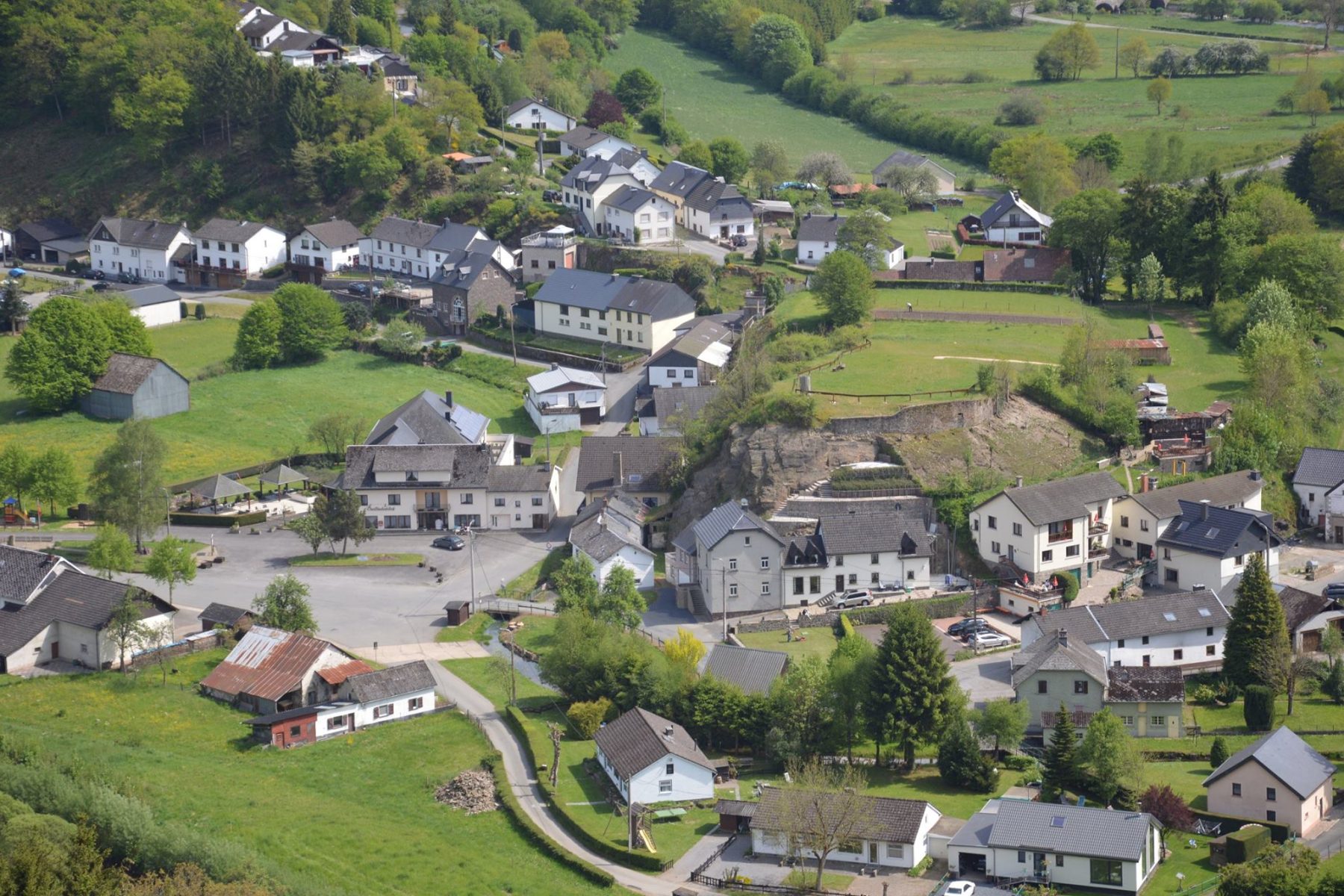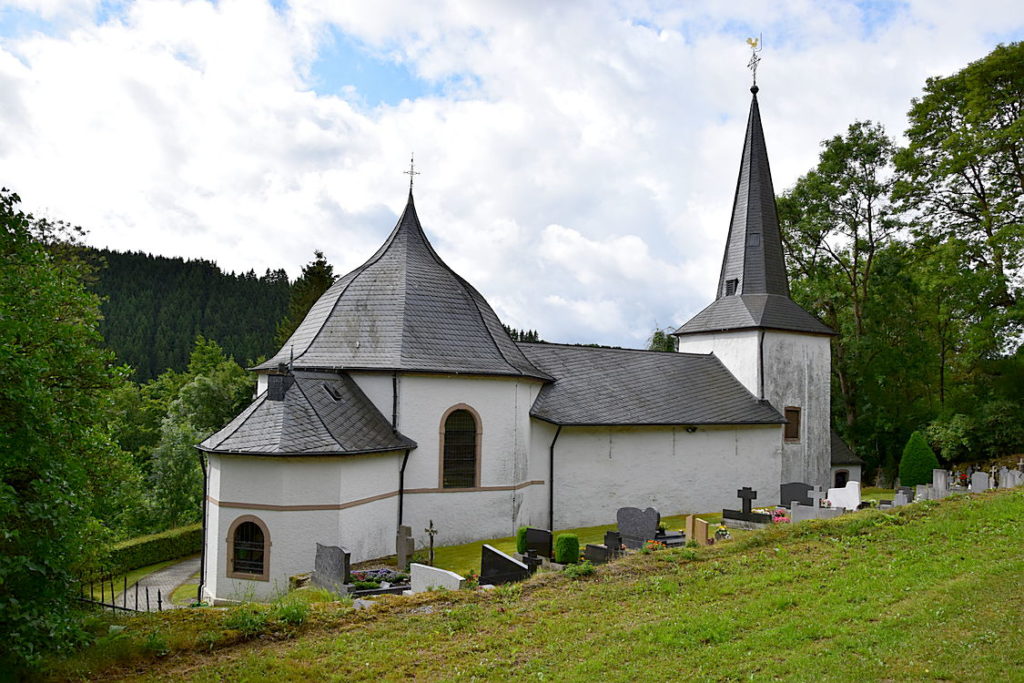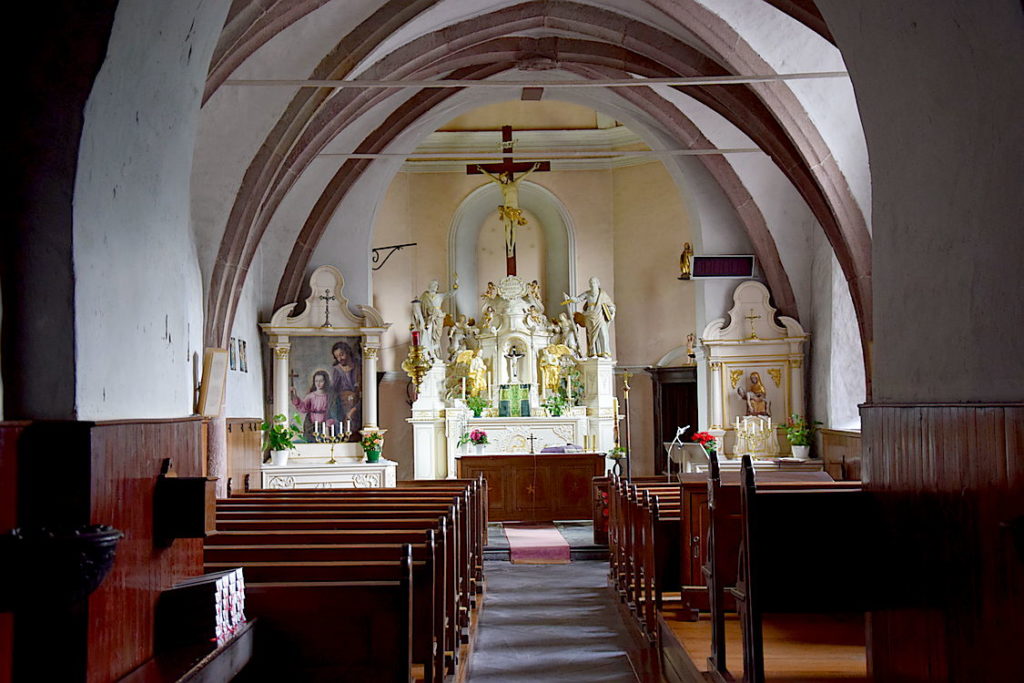Ouren
Parish church of St. Peter and Paul in Ouren
The church, known as “St. Peter’s Church”, impresses on the outside with its curved dome above the octagonal choir. This building from the middle of the 18th century stands opposite the heavy west tower, the core of which is apparently of Romanesque origin. The round-arched entrance is preceded by a low hall with a stained glass window. It bathes the church with its Romanesque traces and rococo ornamentation in a contemporary light without being in disharmony with the interior.
The church, dedicated to the two Princes of the Apostles, stands out due to its location above the Our valley. Due to the severe autumn and winter storms, no stained glass windows were installed on the north side. The special charm of this white church on the edge of the forest must have repeatedly attracted thieves and criminals who stole a cross with cherubs, angels and figures of saints. Ouren-born Brother Josef Belling from the Benedictine Abbey of Maria Laach created a large angel and the replicas on the outside above the door and the sacristy. A high tomb in the church with a reclining depiction of a knight of Ouren has been missing since the second half of the 19th century. The numerous gravestones that covered the floor of the choir are also missing.
The image of St. Joseph comes from the former castle chapel of the Lords of Ouren, who were mentioned in documents from Prüm Abbey and Trier in the 12th century. When it was transferred to the village church, it was adapted and variously associated, with good intentions, with the school of Peter Paul Rubens.
The shell ornaments on two 18th century holy water stones are similar to those in the church in Weweler. Coat of arms stones in the west wall commemorate 17th century anniversaries of the von Ouren family. A special place in the cemetery is occupied by the cross and gravestone with apocalyptic angel of the priest Carl-Josef Velden, who was held in high esteem far beyond Ouren as a spiritual advisor.
Source: Churches and chapels in East Belgium by Freddy Derwahl and Johannes Weber
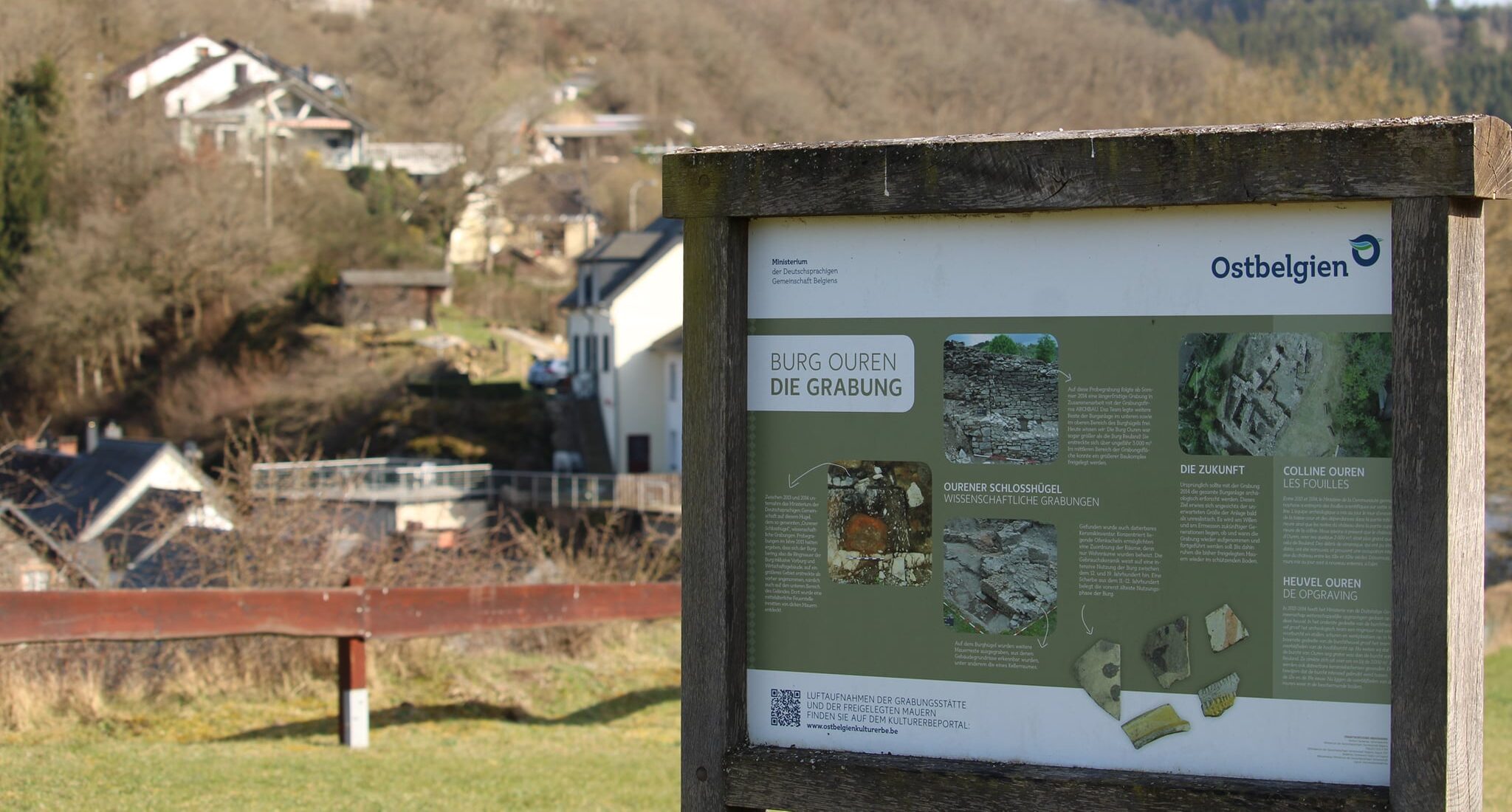
THERE ONCE WAS... THE CASTLE OF THE LORDS OF OUREN
The rocky ledge offered an excellent location with a good view of the surrounding area and was easy to defend.
This spot was probably already inhabited in pre-Roman times. However, it experienced its golden age in the Middle Ages under the Lords of Ouren. They came from one of the most noble and important families of the Eifel. In their coat of arms they had an anchor cross.
The family of the Lords of Ouren is mentioned for the first time in 893, but the name appears more frequently only in the 11th century. Probably a fortress stood there already at that time, but certainly in the 12th century. Written sources prove the influence of the Lords of Ouren as far as Luxembourg. Thus, there are sources that suggest that the “Buerg Fiels” (Larochette in the Grand Duchy of Luxembourg) was in the possession of the Lords of Ouren in the 12th century.
Over the centuries, the castle changed its owners frequently. It was rebuilt twice after destructions: in 1535 and in 1615. The reconstructions of these periods, during which the castle was transformed into a chateau, are partly archaeologically provable.
There are still traces of a ruling family from Ouren from the 17th century: the coat of arms stones of the couple von Giltingen/von Tavigny can be seen in St. Peter’s Church in Ouren. They show the year 1625. The last known lord of the castle was Karl August von Dobbelstein in the late 18th century.
At the beginning of the 19th century, several buildings were still standing, but the castle itself was already uninhabited. In 1845 and 1846 its remains were sold by public auction after it had been destroyed by French revolutionary troops in 1794. Citizens from villages all over the region bought at auction mantelpieces, floor tiles and such. Parts of the chateau were apparently also used in houses in the immediate surroundings. As a result, there is hardly anything left of the once imposing manor today.
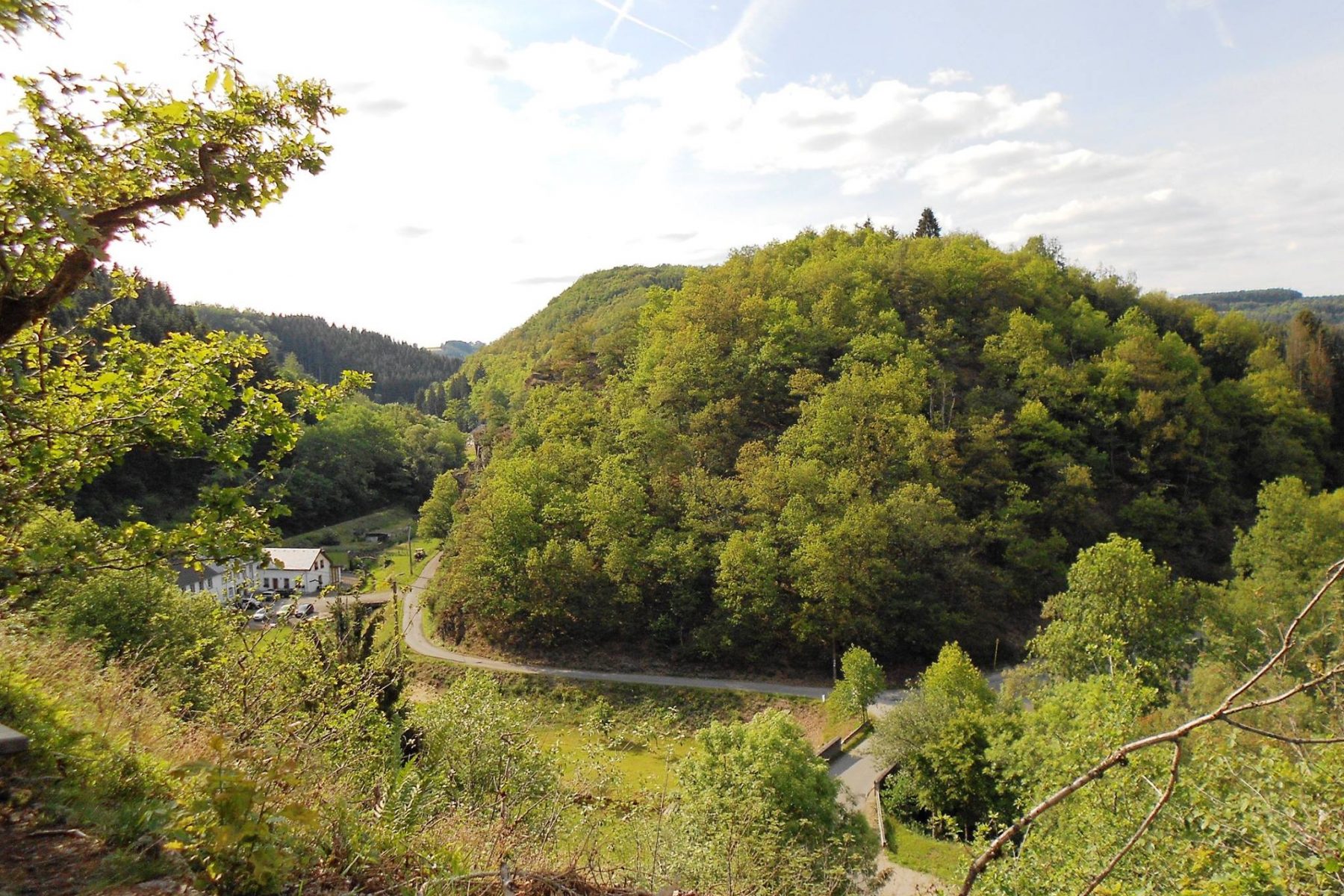
Rittersprung
Once upon a time there was a robber baron who fell in love with the wife of the knight of Ouren. The robber baron thus hatched a plan by which he could win the pretty knight’s wife for himself. His decision was made: the mistress in Ouren is yours – and an escape plan has been drawn up. In order to prevent a possible pursuit, the horse was re-shod, whereby the horseshoes, in order to mislead the pursuers, were put on in the wrong direction so that the remaining track led in exactly the opposite direction.
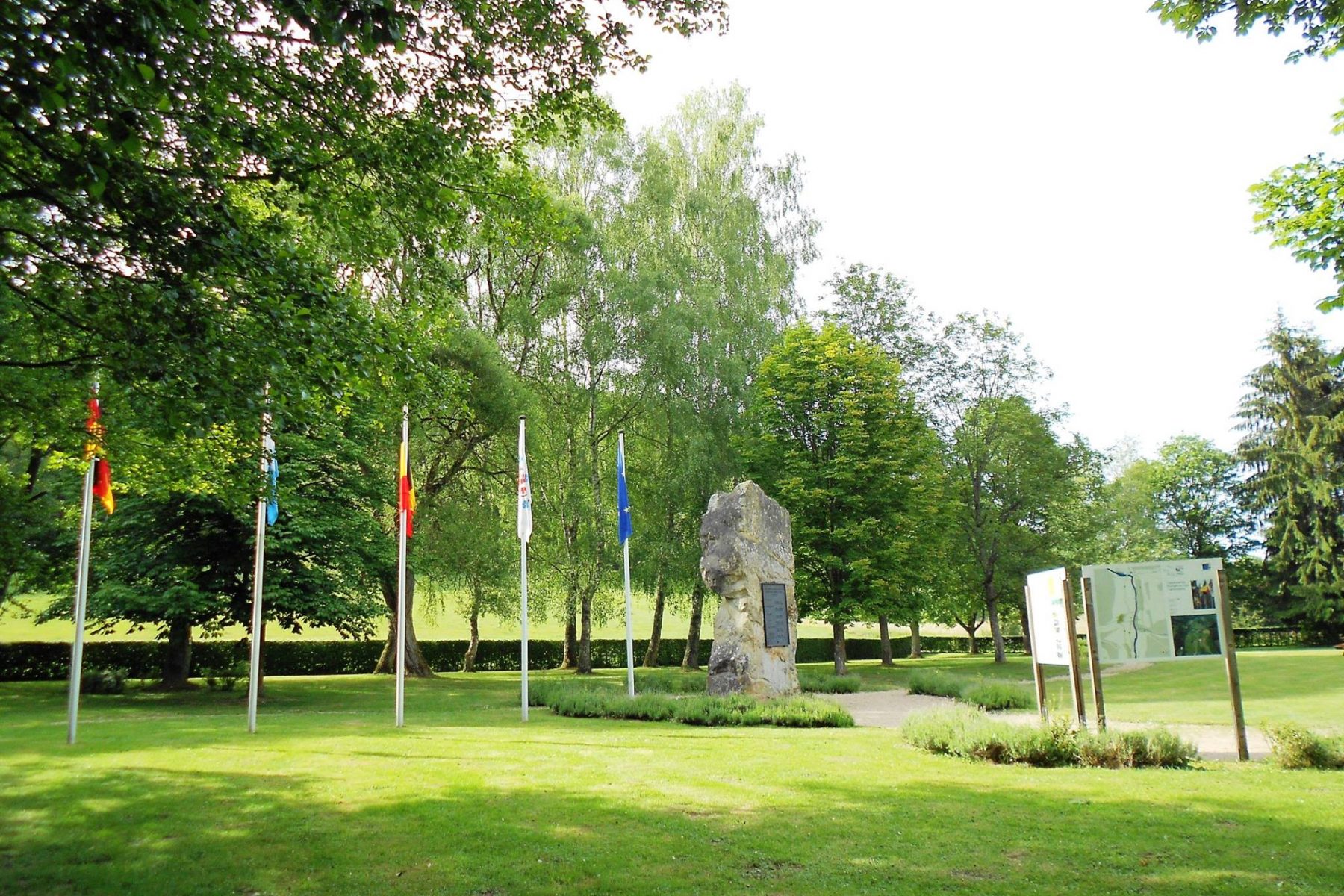
The Europe Monument
In the southern foothills of the eastern cantons, as well as the municipality of Burg-Reuland, one kilometer below the village of Ouren, the hiker comes across the European monument where the Ribbach and Our flow together. The sovereign territories of Germany, the Grand Duchy of Luxembourg and Belgium meet at this triangle. The border runs right through the Our and the Ribbach.
On the occasion of the General Assembly of the Tourist Association in 1967, Georg WAGNER, President of the Association of the Eifel and Ardennes, Member of Parliament and President of the Chamber in Luxembourg, suggested the establishment of a European monument in this triangle.
In 1972 the area was purchased by the municipalities of Arzfeld / BRD, Heinerscheid / LUX and Burg-Reuland and notarized. 5 impressive megalites were set up in a park that was inaugurated on October 22, 1977, symbolizing the countries that were then part of the European Community.
The Four stones of the countries come from France, Germany, the Grand Duchy of Luxembourg and Belgium.
